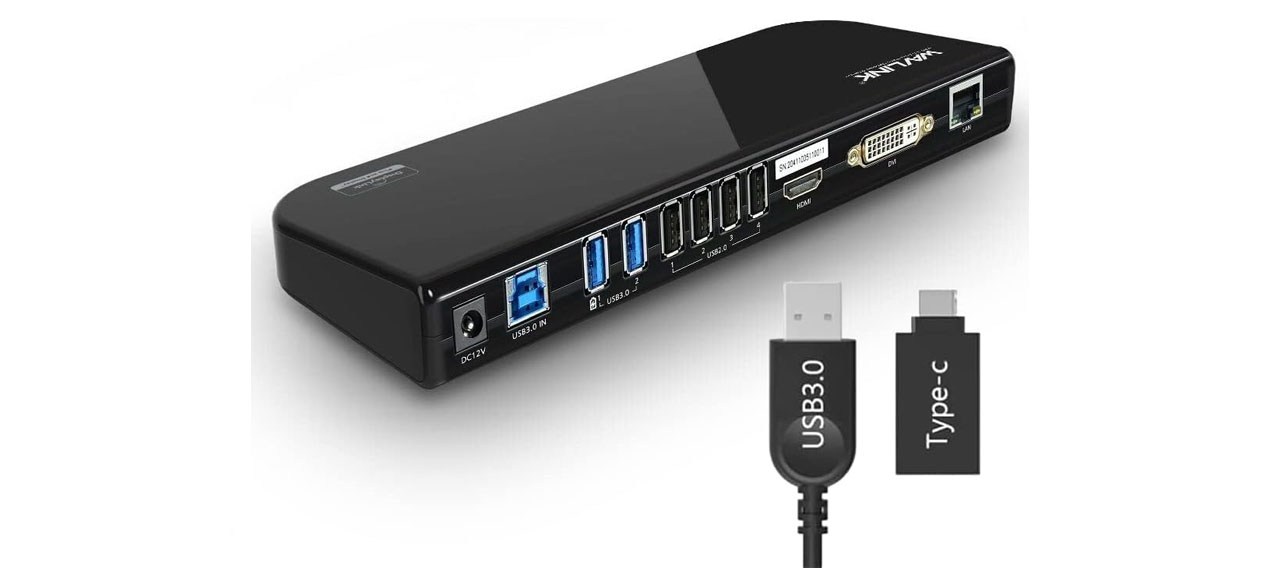Which USB hubs are best?
As devices get smaller and lighter, less popular features—like Ethernet ports and full-size HDMI outputs—get removed from notebooks first. Some notebook PCs have even done away with USB Type-A ports, even though quite a few consumers have plenty of cables and devices that use them. Having the right USB hub can expand your connectivity, add SD and other card readers and allow for high-speed wired internet.
The best USB hub for most people is the Anker PowerExpand+ 7-in-1 because of its wide selection of connectors and reasonable price.
What to know before you buy a USB hub
USB plugs vs. USB protocols
Make no mistake, it can be confusing trying to navigate the sea of numbers and version names when trying to determine USB compatibility. On its most basic level, the term USB refers to the internal wiring that lets a PC recognize a USB-connected device. In everyday usage, USB can refer to either that physical plug configuration or the standards the device and computer each support.
The two plugs you’ll encounter most are Type-A and Type-C, which are very different configurations. Most users are probably familiar with the USB-A format, as it’s been used for years on all kinds of peripherals. After many years of dealing with a developing ecosystem, USB-C is finally mainstream and offers a more robust and long-lasting connector design. It’s also reversible, so you’ll never have to try to plug it in, then flip it over and actually plug it in.
The other part of USB naming is considerably more confusing. Terms like 3.0, 3.1, SuperSpeed, Gen2 2×2 and Thunderbolt 3 and 4 get thrown around in conjunction with USB-C, but they’re not all guaranteed to be supported by every USB-C-enabled device. Most USB devices that use significant bandwidth support the 5Gbps USB 3.0 protocol and an increasing number are engineered to the USB 3.1 Gen2 standard that ups the bandwidth to 10Gbps. Even fewer use the Intel-developed Thunderbolt 3 and 4 standards, which each have a peak bandwidth of 40Gbps.
Possibly the most important part of the USB-C standard is the USB-C Power Delivery protocol. Since it relies on the advanced design of USB-C, it’s not supported by any Type-A plugs or ports. USB PD can provide up to 100W of power, enough to charge most laptops at full speed.
What to look for in a quality USB hub
USB Type-A vs. Type-C connector
Most importantly, you should look for a USB hub that’s compatible with your available USB port. If you have a relatively new laptop with a slim design that doesn’t have bulky connectors like Ethernet or HDMI, you’re in luck because there are plenty of reasonably priced USB-C dongles with each of those connectors.
If you have a single open Type-A port and need to connect multiple Type-A devices, you can get by with something cheaper and simpler.
USB Power Delivery passthrough
Modern laptops often let you choose between a traditional power brick and DC barrel plug or a Power Delivery-enabled USB-C port for charging. If your laptop has just one USB-C port, you’re not resigned to lugging a heavy power brick everywhere. Most quality USB-C hubs offer at least 60W of power passthrough, while many compact models can provide up to 85W. Owners of high-powered desktop replacement laptops are the only ones who will need more power than that, and such consumers will almost certainly find their needs met by a plug-in docking station.
How much you can expect to spend on a USB hub
The most basic USB-A hubs cost about $15, while the nicest and most versatile ones cost about $100. Powered docking stations, which support advanced protocols like Thunderbolt 4, can cost as much as $300.
USB hub FAQ
Can I use external displays with a USB hub?
A. It depends. If it plugs into your computer’s USB-C port and your computer supports Alt Mode over USB or Thunderbolt 3 or 4, there’s a good chance you can plug in a single external display using a hub’s HDMI port and it should work right away. If you’re using a MacBook or a laptop that’s not very recent, things might be a little different. M1 MacBooks support only a single external display over USB-C and some older laptops don’t support the correct video formats. For those cases, there are USB hubs with DisplayLink technology, which is just a tiny GPU embedded in the hub that does the video processing on its own.
Are USB-C hubs safe for charging my laptop?
A. Yes, although go with a reputable manufacturer to be certain. There used to be more concern about charger cross-compatibility, but those worries have almost completely been laid to rest as the Type-C standard has been solidified as the go-to USB connector for new electronics.
What’s the best USB hub to buy?
Top USB hub
What you need to know: This slim and lightweight accessory has just about every port ever left off a modern ultraportable laptop.
What you’ll love: It offers SuperSpeed USB-A connectivity as well as up to 100W of passthrough charging and a pair of Type-A ports for connecting older peripherals. Its gigabit-class Ethernet and both full-size and microSD card readers make it one of the most versatile options on the market. If you need something with 10Gbps Gen2 USB bandwidth and 4K resolution at 60Hz, there’s an 8-in-1 model that has both, although at a higher price.
What you should consider: It doesn’t have a built-in charger, so you’ll have to supply your own USB-C PD power brick.
Top USB hub for the money
What you need to know: A straightforward choice for turning one USB-A port into four of them.
What you’ll love: There’s not much to this one, but that means it’s also highly reliable and particularly affordable. It is also available with a 6-inch cable. Those both have a USB Type-A connector, and there’s an extremely similar option from Uni that turns a USB-C connector into four USB-A ports.
What you should consider: None of these are particularly versatile or allow for 10Gbps USB bandwidth.
Worth checking out
Anker PowerExpand Elite Docking Station
What you need to know: This full-featured docking station lets you power laptops at up to 85W while providing plenty of bandwidth for resource-intensive tasks.
What you’ll love: It’s designed to take advantage of the blazing-fast Thunderbolt 3 standard, yet also works with most laptops with USB-C ports that support Power Delivery and DisplayPort Alt Mode over USB-C. If you want something even faster, consider the enhanced Anker Apex Docking Station, which requires Thunderbolt 4 connectivity.
What you should consider: It must be plugged into the wall and it’s relatively large and heavy, so it’s not meant to be a portable device.
Prices listed reflect time and date of publication and are subject to change.
Check out our Daily Deals for the best products at the best prices and sign up here to receive the BestReviews weekly newsletter full of shopping inspo and sales.
BestReviews spends thousands of hours researching, analyzing and testing products to recommend the best picks for most consumers. BestReviews and its newspaper partners may earn a commission if you purchase a product through one of our links.












